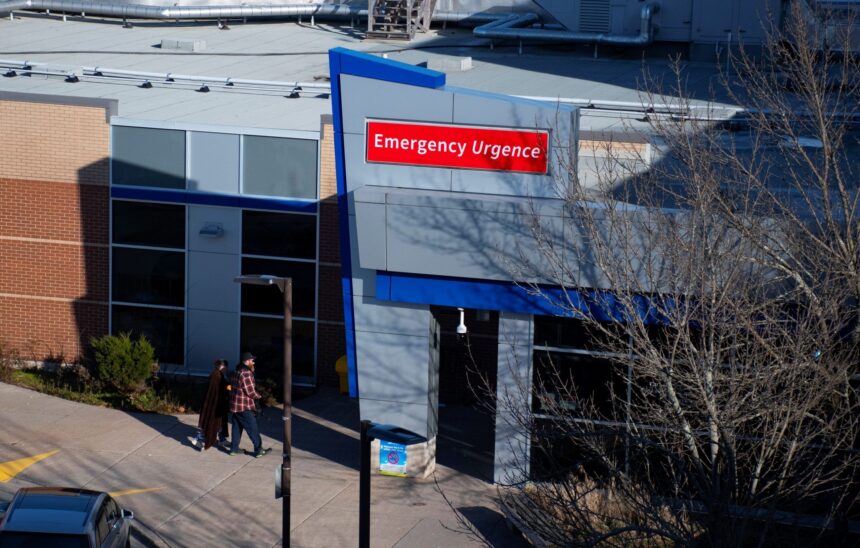A report showed that 9.8 per cent of patients left Nova Scotia emergency departments in 2024 before receiving treatment. Photo by Ryan TaplinArticle contentNearly 10 per cent of patients left Nova Scotia’s emergency rooms without being treated last year, according to a report published by the Montreal Economic Institute (MEI).THIS CONTENT IS RESERVED FOR SUBSCRIBERS ONLY.Subscribe now to access this story and more:Unlimited access to the website and appExclusive access to premium content, newsletters and podcastsFull access to the e-Edition app, an electronic replica of the print edition that you can share, download and comment onEnjoy insights and behind-the-scenes analysis from our award-winning journalistsSupport local journalists and the next generation of journalistsSUBSCRIBE TO UNLOCK MORE ARTICLES.Subscribe or sign in to your account to continue your reading experience.Unlimited access to the website and appExclusive access to premium content, newsletters and podcastsFull access to the e-Edition app, an electronic replica of the print edition that you can share, download and comment onEnjoy insights and behind-the-scenes analysis from our award-winning journalistsSupport local journalists and the next generation of journalistsRegister to unlock more articles.Create an account or sign in to continue your reading experience.Access additional stories every monthShare your thoughts and join the conversation in our commenting communityGet email updates from your favourite authorsSign In or Create an AccountorArticle contentOf the nearly 552,000 recorded emergency room visits in the province in 2024, 54,285 patients walked away before receiving care, mostly due to long wait times. Nova Scotia’s early departure rate of 9.8 per cent was above the national rate of 7.78 per cent.Article contentArticle contentThe report suggests a worsening trend in Nova Scotia. Since 2019, the ratio of patients leaving has surged by 53.9 per cent.Article content“These patients are not leaving because they feel better, but because the system is failing them,” says Samantha Dagres, a spokesperson for the MEI. “Thousands of Nova Scotians are being denied access to care each year.”Article contentIt’s a trend being observed nationwide, as rates of premature departures have risen significantly since 2019. Last year, the number of Canadian patients leaving without treatment increased by 35.6 per cent. Of the 16.3 million emergency room visits, 1,267,736 patients left early in 2024.Article contentArticle contentArticle contentThe report cites that this outcome is one of the most worrisome symptoms of the lack of access to care in Canada.Article contentCanada’s triage acuity scale features five levels; P1 resuscitation, P2 very urgent, P3 urgent, P4 semi-urgent and P5 non-urgent.Article contentIn Nova Scotia, nearly half (45.9%) of those who leave without treatment are classified as P3, which are cases that are not life-threatening but still require urgent medical attention.Article content“This is particularly troubling as it means patients are sent back to the waiting room despite a very real risk of deterioration,” said Dagres.Article contentDagres emphasized that patients forced to delay or forgo care often end up suffering from worsening conditions, which lead to more complex cases.Article contentMichelle Thompson, Nova Scotia’s Minister of Health and Wellness, wasn’t surprised by the number of people who leave emergency departments, but said there are many ways for patients to access care in the province.Article contentArticle content“We always have a percentage of people who leave an emergency department because of the wait times,” said Thompson. “I think what is important for us to talk to citizens about in Nova Scotia is the number of ways people can actually access care. In the emergency room itself, we have a number of places that have rapid assessment zones. We have urgent care, virtual emergency care and we also have a number of pharma care options in the community.”Article contentThompson said investments have been made by the province to address access and flow while in the emergency department.Article content“We know that long waits in the emergency room are often because of capacity in our inpatient beds, so it is a system approach we have taken,” said Thompson at Thursday’s cabinet briefing. “We’ve done a lot of things in Nova Scotia to address and make sure that patients can be triaged and get early care where appropriate, and perhaps be given a community-based opportunity or option if their acuity is low. “We have more work to do, we always will.”
Over 54,000 patients left Nova Scotia ERs before receiving treatment in 2024: Report











